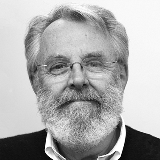
Melvyn Goodale
About
Mel Goodale’s research explores how humans process visual information and use it to interact with their environment.
He has proposed a ‘duplex’ organization of high-level vision, involving separate but complementary visual systems for the perception of objects, and the control of actions directed at objects. This account provides a convincing resolution to conflicting accounts of visual function that has characterized much of the work in the field for the last one hundred years.
Awards
- Fellow of the Royal Society of Canada
- Fellow of the Royal Society, U.K.
- Canada Research Chair in Visual Neuroscience
- Donald O. Hebb Distinguished Contribution Award
- Hellmuth Prize for Scientific Achievement
Relevant Publications
Chen, J., Sperandio I., & Goodale, M.A. (2018). Proprioceptive distance cues restore perfect size constancy in grasping, but not perception, when vision is limited. Current Biology, 28(6), 927-932, DOI: https://doi.org/10.1016/j.cub.2018.01.076
Goodale, M. A. (2014). How (and why) the visual control of action differs from visual perception. Proceedings of the Royal Society B: Biological Sciences, 281(1785), 20140337.
Goodale, M.A., & Milner, A. D. (2013). Sight unseen: An exploration of conscious and unconscious vision, 2nd ed. Oxford: Oxford University Press.
Goodale, M.A., & Milner, A. D. (1997). The Visual Brain in Action, 2nd ed. Oxford: Oxford University Press.
Goodale, M.A., & Milner, A. D. (1992). Separate visual pathways for perception and action. Trends in Neurosciences, 15(1), 20–25. DOI: https://doi.org/10.1016/0166-2236(92)90344-8